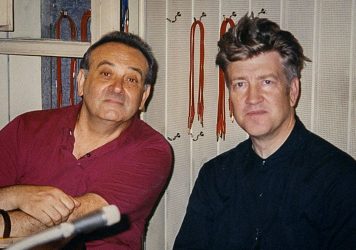
The conquering of the decennial Sight & Sound Greatest Films Poll by Chantal Akerman’s Jeanne Dielman, 23, quai du Commerce, 1080 Bruxelles is a cultural moment whose reverberations still haven’t even begun to be really felt. Not only for reasons of identity politics (few expected a feminist work by a 24-year-old Jewish lesbian to top the poll), but also in terms of the film’s form. I won’t go into any more detail on that masterpiece, though we all know that it is often dismissed as ‘boring’. Well, you ain’t seen nothin’ yet.
The Cure For Insomnia is acknowledged by Guinness World Records as the longest film ever made. It runs for 85 hours, making Out 1 (13 hours), Die Zweite Heimat (25 hours) and Sátántangó (7 hours) look miniscule by comparison. Little is known about its content, though we know that it largely consists of Chicago poet L.D. Groban reading his eponymous 4000-page poem spliced, with intermittent porn clips and heavy metal videos upsetting the lull. I think the title sounds quite appropriate.
Director John Henry Timmis IV is a mysterious figure. He was a local cult legend in Chicago, whose musical sound was punkish and had a similar lo-fi aesthetic to early Liz Phair – search ‘JT IV’ on YouTube to get a feel for his approach to art. L.D. Groban is similarly elusive – the best document online for giving a picture of who he was is actually a page of obituaries. Is his poem narrative? Is it didactic? Is it just a long stream-of-consciousness? I’ve scoured the Internet and found no real clues.
This soporific behemoth has only ever been seen by a few; its only known public screening took place in Chicago from January 31 to February 3, 1987, and naturally it has long been believed to be lost. Making things harder for archivists is that Timmis died in 2002 and Groban in 2011, so the obvious ports of call are dwindling. In 2011, a forum thread was begun on a site called camendesign, with sporadic posts documenting fruitless attempts at sourcing the film and pure speculation as to the film’s contents and status of existence.
On 13 February 2023, a regular contributor to the thread reported good news. After emailing Groban’s sister Deborah Groban Olson through her work email, they got a promising response – that she has a copy, and would be willing to send one provided they pay for duplication and postage, to which they confirmed they would – though we are not yet informed on the matter of the film’s rights. Camendesign’s users are now waiting for the next update in this saga. Some assurance comes from Olson’s calling – she is a lawyer, and responded via her work email, so it’s unlikely to be a scam.
Sitting through The Cure For Insomnia does not seem an attractive prospect to even the most ardent cinephiles, but this is potentially a huge development in the world of film preservation. Who knows what life the film will have if located – perhaps it will play on loop on a dedicated website, serving a similar function to the countless 10-hour white noise posts on YouTube, or hosted on archive.org for anyone to skim through as they please. Surely, in 85 hours of footage, there has to be some meme potential in there somewhere, right? Whatever happens, it seems unlikely Janus Films or the BFI will commission a restoration any time soon.
Published 27 Feb 2023

This early work from the French New Wave icon is a must-watch for cinephiles.

Nearly an hour of unused scenes and alternate takes accompany the Criterion disc.

The duo’s fabled experimental album is set for release later this year.